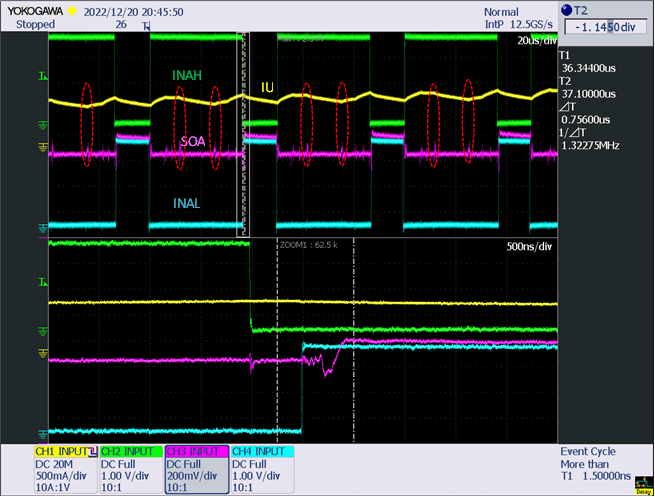Hi team,
Below waveform in datasheet shows a 2us delay between INx and SOx, with 200V/us slew rate, it is much longer than parameter giver by datasheet.
Could you please let me know the reason?
Also, I can see some pulse noise in SOx waveform, seems to be caused by INx on/off, will it be a problem?
Best regards,
Zeming


